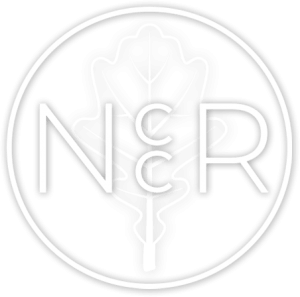Family Therapy Through the Somatic Lens
Family Therapy is a Part of Healing and Well Being
Family is where we learn to develop our core beliefs, our sense of self, and our sense of the world. It is where our culture and community is based. The family (and family environment) is where a child develops his or her brain, limbic structures, and sense of morality. Due to the inarguable importance of the family in psychological health, family therapy is often a crucial part of healing and mental well being for both individuals and their families as a whole.
The Family Therapist
Family therapy differs from individual psychotherapy in a few important ways. Primarily, the family therapist views the problems that are presented as part of a greater system, and not residing within an individual. Rather than identifying a certain member of the family as the “identified patient,” the therapist works with the family to identify patterns of dysregulation and create safety within the unit to form healthier patterns and ways of relating.

TREATMENT
Families might seek treatment for a number of reasons, including divorce, trauma, parental conflict, or when a child is having a problem such as school issues, sibling conflict, disordered eating or substance abuse. Families often seek treatment when one family member has experienced a trauma or loss as a way of learning to best support their healing.
LICENSES
Although there is a specific degree for Licensed Marriage and Family Therapists, Licensed Clinical Social Workers, Licensed Professional Counselors, and other licensed mental health professionals may all practice family therapy. When seeking a family therapist, finding a practitioner that has specific experience and training in working with family systems can be beneficial in the often challenging realm of managing several nervous systems in the same room.
FAMILY THERAPY TYPES
As with all forms of psychotherapy, there are many forms of family therapy currently practiced. Some of the more well known forms are Bowenian, Structural, and Strategic. Although there are important differences in each of these schools of thought, they all tend towards focusing on family structures, conflict resolution, and the developmental stage of both the family and the individuals within the family.
A Somatic Approach to Family Therapy
An embodied or somatic approach to family therapy differs from these traditional modes in several important ways. Although family structure, conflict resolution and developmental stages remain important in this modality, a somatically oriented therapist would also place a greater focus on emotional/ self regulation, cultural factors, family support, and felt attachment. These are all crucial elements in creating safety within the family system, which is an imperative for individual and systemic healing.
For example, during the assessment stage, a somatically oriented family therapist would be looking not only for patterns and narratives that were contributing to the family’s current dysfunction, but also look to see what was already going well in the family system, and build upon that. A treatment plan might involve specific skill building to help increase resiliency. By establishing resiliency within a family system, the family can reduce the amount of time and space spent in a vulnerable space. In this context, resiliency simply means a family’s ability to tolerate and respond to adversity and stress. This would include helping families develop more positive interactions (to help establish a sense of safety), developing emotion regulation skills to support each other through difficult times, and building upon extended family and community resources to further expand a family’s ability to move through challenging situations.
Additionally, the therapist would be looking for both implicit and explicit patterns within the family as a way of understanding attachment behaviors. Explicit patterns include things like family narratives, core beliefs, and behavior sequences. Implicit patterns include posture, eye contact, vocal tone, facial expression, and moments of misattunement. The somatic therapist would be tracking for these implicit patterns within individuals and the family, and pointing these patterns out when necessary to help the family to create new patterns and moments of attunement and resonance.
After an initial assessment to gain an understanding of the problem, and establishing a rapport with the family, the therapist would begin to help the family to resource, regulate and co-regulate.
Family Therapy: Resourcing
Resourcing simply means calling attention to, and somatically integrating the internal and external resources the family has in place.
Internal resources would include things such as stability, support, peace, calm, a sense of home, goodness, wellness, and safety.
External resources include things such as home, environment, and financial support.
A family with greater access to resources will likely be more resilient, and a family with fewer resources more susceptible to overwhelm and dysregulation. Certainly some families will be more (externally) well resourced than others, simply due to economic advantage or cultural privilege.
Family Therapy: Self-Regulation
Once a family has learned how to resource, and built upon the external resources available to them, each family member would need to learn how to self-regulate. Because everyone has their own unique pattern of stress response, a somatic therapist would be working with both the individual and their family to develop and build on their capacity to stay regulated in times of stress.
Self regulation skills can be taught to both children and parents, and parents can learn how to help their children self regulate. Self regulation, in the emotional realm, refers to our ability to work with our ever changing environment, and respond accordingly to stressors in our environments. When we don’t have self regulation skills, we lack the ability to soothe ourselves when in distress, or feel overwhelmed by our emotional experience. The somatic therapist would then teach family members how to stay out of “overwhelm” through self-soothing, grounding, and orienting to the present.
THE AUTONOMIC NERVOUS SYSTEM AND SELF-REGULATION
Seen through the lens of the autonomic nervous system, self-regulation is all about creating balance in the system, and helping create a sense of safety in the body. The nervous system is constantly scanning for perceived threat, and thus helping modulate one’s response. If a person’s self-regulatory capacity is compromised, they will likely sense threat when it is not there, or in a manner disproportionate to the actual threat (think fight, flight or freeze).
By establishing a felt sense of safety, one’s self-regulatory capacity can be restored, allowing an individual to feel safe enough to be in meaningful, close relationships.
Family Therapy: Co-Regulation
Self-regulation depends in part on one’s capacity for co-regulation. Co-regulation is best defined as “the way in which one person’s autonomic nervous system sensitively interacts with another person’s autonomic nervous system in a way that facilitates greater emotional balance and physical health. “

STRESS CAN CAUSE DYSREGULATION
The somatically oriented family therapist would not only attempt to break patterns of dysregulation in a family system, but also to help a family create new, healthier patterns of co-regulation. For example, dysregulation can occur in a family system when stress levels are high, and a parent or caregiver responds to a child’s anxiety or fear with dismissiveness or anger. The child will not only struggle to self regulate in this example, but the parent or caregiver’s self regulatory capacity would also be compromised by the child’s anxiety. Thus a cycle of dysregulation occurs.
CO-REGULATION CAN CREATE RESILIENCY AND SAFETY
Co-regulation occurs when a parent can respond in an attuned and aware manner, adjusting themselves when interacting with a child in order to maintain a regulated state. This in turn influences the child to work towards regulation. Family members can learn each other’s patterns, and their familial patterns, to work towards coherence and healthy co-regulation. Co-regulation is a crucial part of creating resiliency and safety in the family system. Co-regulation is a prosocial behavior, and directly stimulates the vagus nerve, which sends signals of safety and well being to each individual family member via the autonomic nervous system.
Further examples of attunement and co-regulation include a child’s sense of being seen and heard, as well as a parent’s ability to effectively respond to the needs they observe in the child. This is turn helps a child develop healthy attachment to their parent. From the foundation of secure attachment with a parent, a child can feel safe enough to explore the world. These attachment bonds can continue to be formed throughout a child’s developmental years and nurture the sense of safety needed to create a resilient family unit.
Family Therapy and Treatment by a Somatic Therapist
The somatic therapist would help a family to capitalize and build upon co-regulatory behaviors and also to be aware when they are in a dysregulatory state in order to break the damaging patterns and continuously build upon regulatory and resourcing behaviors. Overall treatment goals would include not only a change in regulatory capacity and availability, but also increased quality of life, and a continuous sense of safety within the family system. Although there are many ways of working within family systems, an embodied approach offers a route for families not only to heal from trauma and solve conflicts, but to repattern their family structure, and pave the way for resilient families in future generations.

NCCR and Family Therapy
NC Center for Resiliency, the leading experts in the somatic experiencing, are somatic psychotherapists who offer family therapy as well as many other mental health therapies. NCCR is located in Chapel Hill, NC and provide services to clients all over the Triangle. If you have any questions or would like an initial consultation, please contact us.
Resources:
https://healthypsych.com/family-therapy/
https://www.goodtherapy.org/blog/what-is-self-regulation-why-is-it-so-important-0928165
